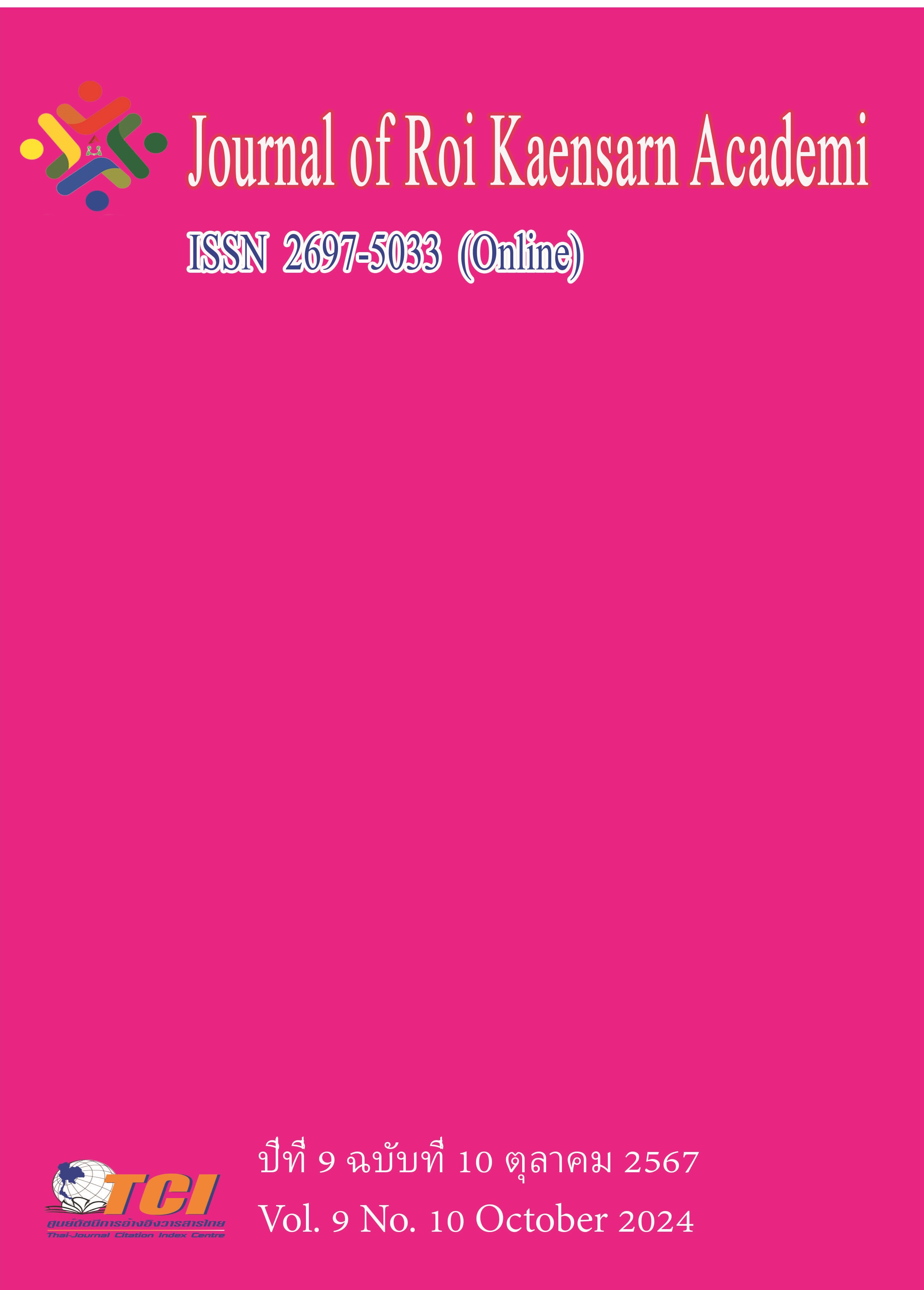The Employability Enhancement For Students of Art Universities in Liaoning Province
Main Article Content
บทคัดย่อ
The objectives of this research were: (1) to explore the components of student’s employability of art universities in Liaoning Province, and (2) to propose the managerial guidelines for student’s employability enhancement of art universities in Liaoning Province.
The research was a mixed method between quantitative research and qualitative research. Population was 1,047 teachers work in the 2023 academic year at eight art universities in Liaoning Province; the sample size was determined by Krejcie and Morgan’s tables and was obtained using stratified random sampling method, with a total of 285 teachers. Key informants for interview total 11 key informants were selected by the purpose sampling method. Focus group discussion by seven key informants. The data collection instruments include a five-point rating scale. The statistics used for data analysis were frequency, percentage, refer to, Standard Deviation and Exploratory Factor Analysis (EFA). Both Interviews and Focus Group Discussion were analyzed by content analysis.
The research results showed: (1) the student’s employability of art universities in Liaoning Province, total 5 components included: Policy and goal setting, Student’s employability attributes, Effectiveness management and collaboration platform, Quality education and training, and Monitoring and evaluation, and (2) managerial guidelines for student’s employability enhancement of art universities in Liaoning Province, total 32 guidelines included: 5 for Policy and goal setting, 8 for Student’s employability attributes, 8 for Effectiveness management and collaboration platform, 7 for Quality education and training, and 4 for Monitoring and evaluation.
Article Details
เอกสารอ้างอิง
Marissa Campbell,(2022). Top 5 Skills Employers Look For job. Online. Retrieved from https://newmanu.edu/top-5-skills-employers-look-for.
Bridgstock, R., & Jackson, D. (2021). Strengthening graduate employability in higher
education institutions: A review of current approaches and priorities for the
future. Journal of Teaching and Learning for Graduate Employability, 12 (1),
-26. https://doi.org/10.21153/jtlge2021vol12no1art1011
Campbell, M. (2022). Essential skills for employability: A comprehensive framework
for higher education. Higher Education, Skills and Work-Based Learning, 12 (2),
-395. https://doi.org/10.1108/HESWBL-09-2021-0152
Chen, L., & Liu, Y. (2021). Quality assurance in Chinese art education: Standards and
implementation strategies. Higher Education Research & Development, 40 (3),
-624. https://doi.org/10.1080/07294360.2020.1773771
Li, J., & Zhang, H. (2022). Evaluation systems in Chinese higher education: Professional standards and quality metrics. Quality Assurance in Education, 30 (1), 78-93. https://doi.org/10.1108/QAE-06-2021-0075
The General Office of Fujian Provincial People's Government (2021). Outline of the. 14th Five-Year Plan (2021-2025) for National Economic and Social Development and Vision 2035 of the People's Republic of China. Online. Retireved from https://www.fujian. gov.cn/english/news/202108/t20210809_5665713.htm
Smith, A., & Wilson, B. (2020). Practice-based learning in creative arts education:
Perspectives from China. Studies in Higher Education, 45 (11), 2226-2240.
https://doi.org/10.1080/03075079.2019.1672644
Wang, R., & Li, S. (2019). Industry-university partnerships in Chinese higher
education: Stakeholders, benefits, and challenges. Journal of Higher Education
Policy and Management, 41 (3), 289-304. https://doi.org/10.1080/1360080X.2019. 1565296
World Economic Forum. (2023). Future of Jobs Report 2023. World Economic Forum. Online. Retrieved from https://www3.weforum.org/docs/WEF_Future_of_Jobs_2023.pdf
Zhang, M., & Chen, K. (2023). Higher education reform in China: Policy
implementation and outcomes. Chinese Education & Society, 56 (1), 1-15.

